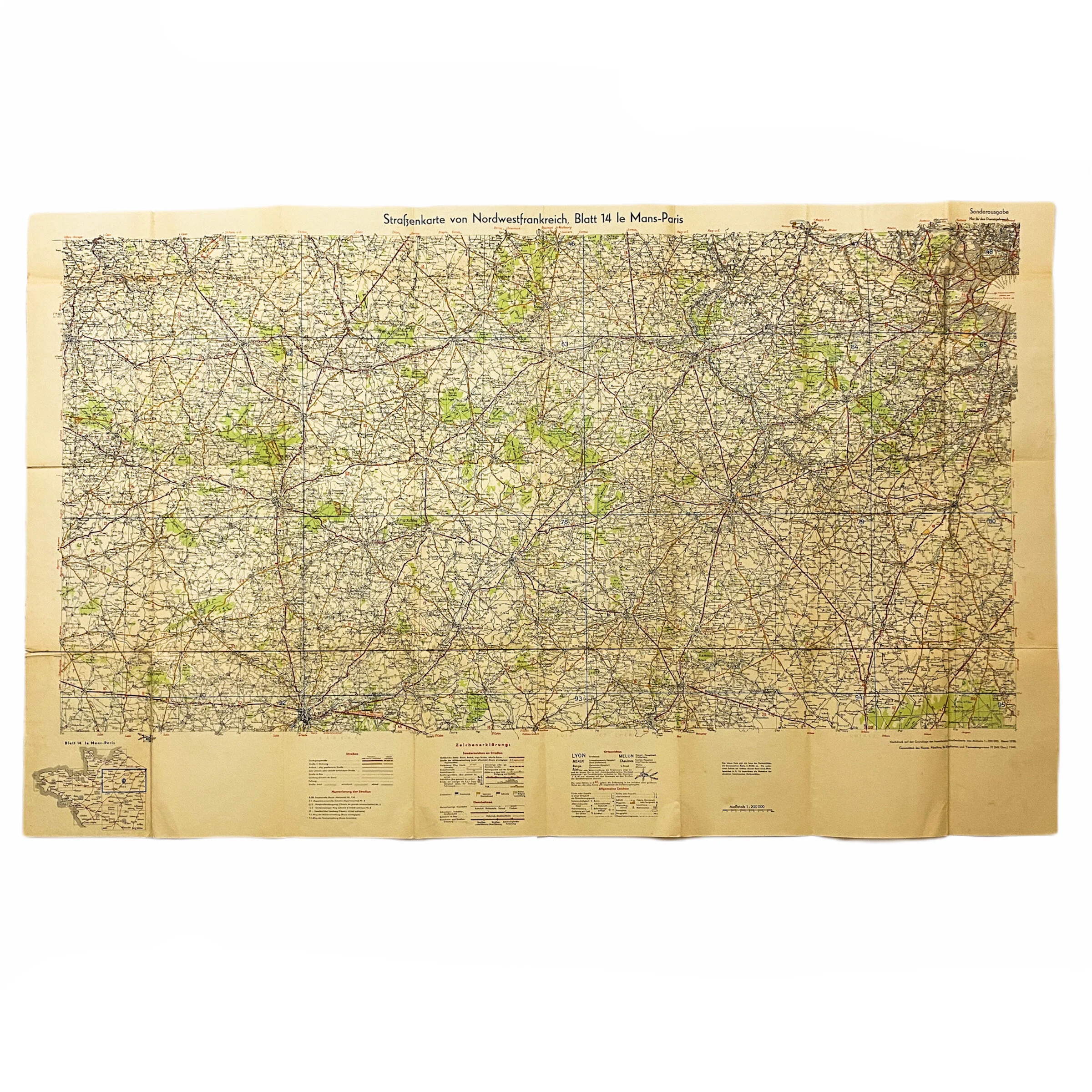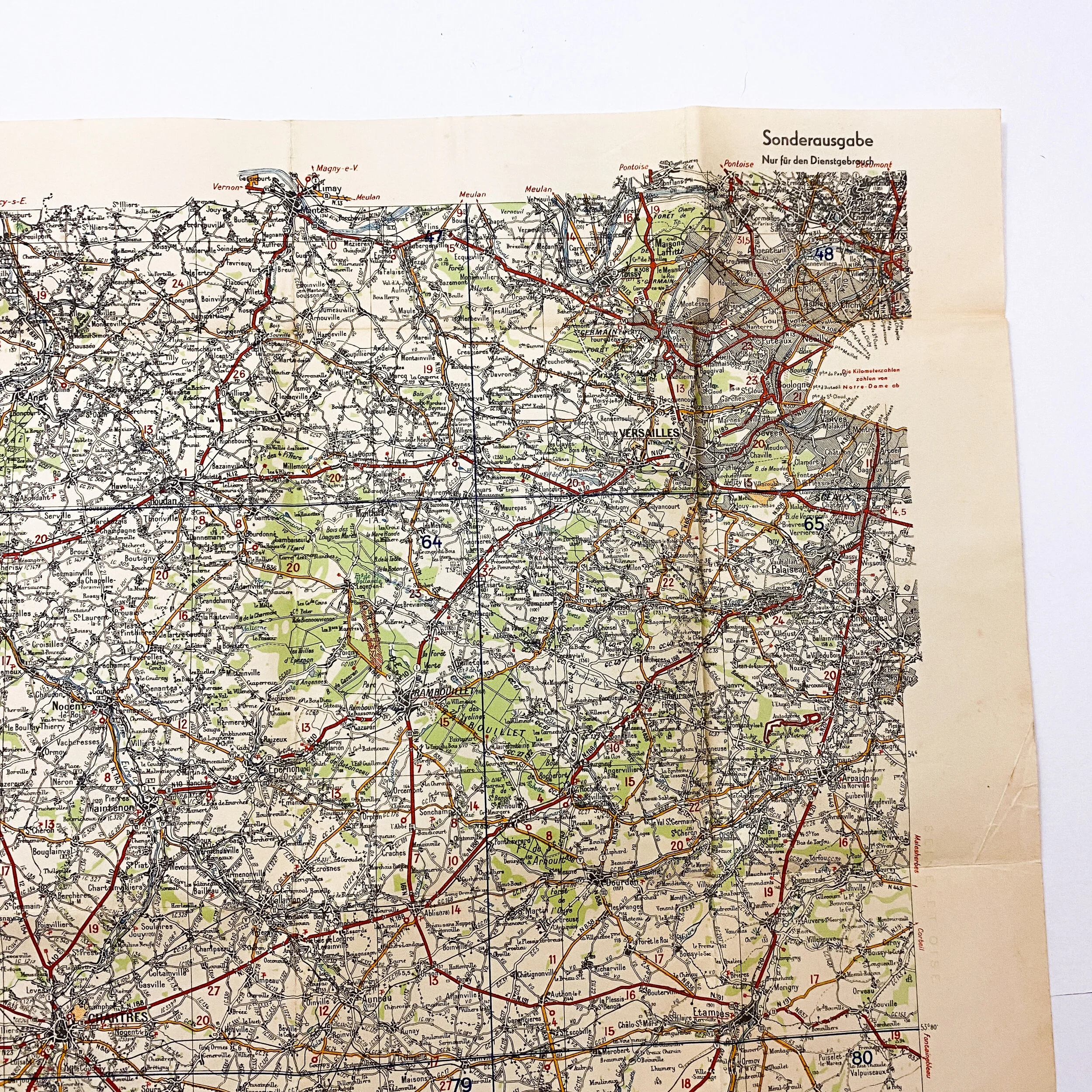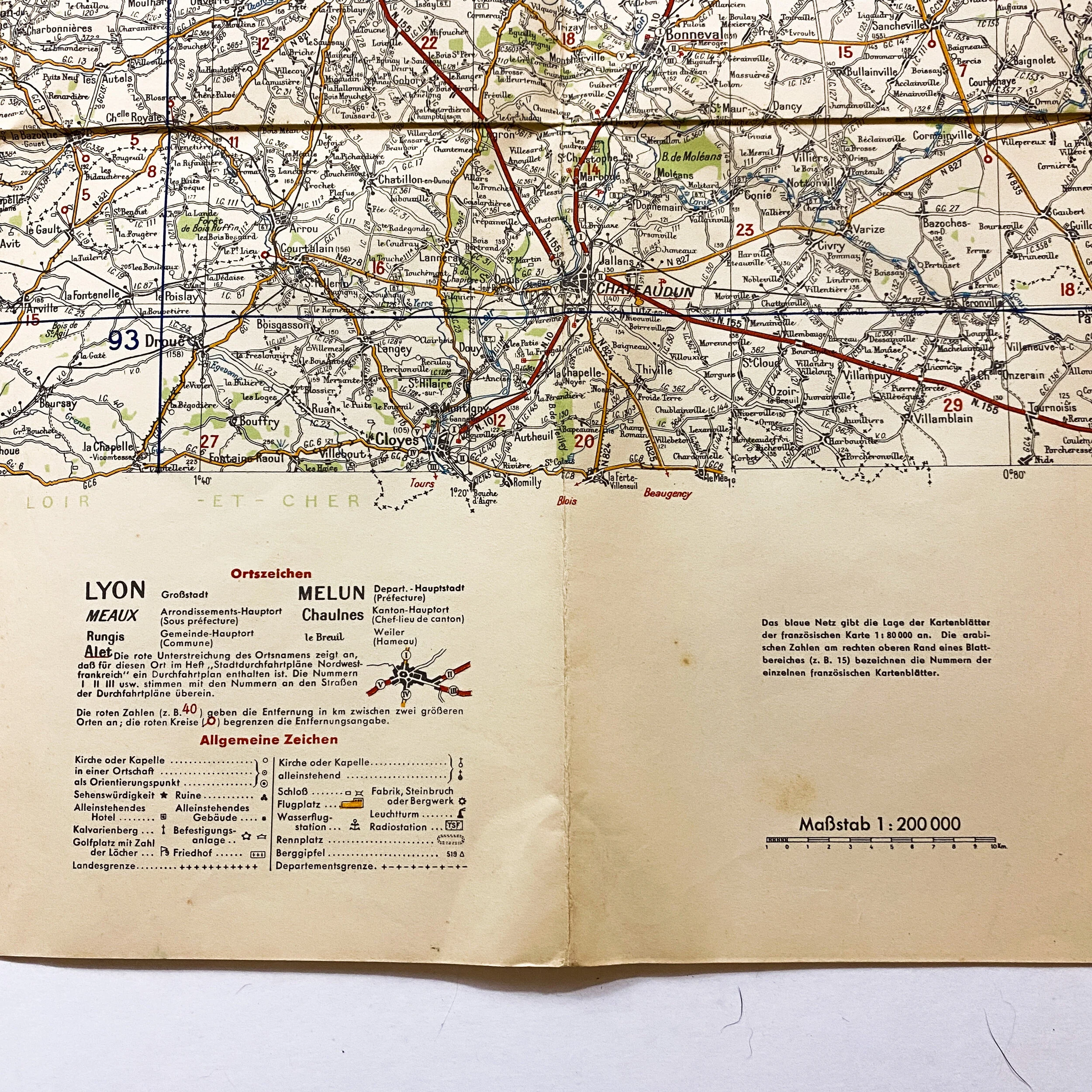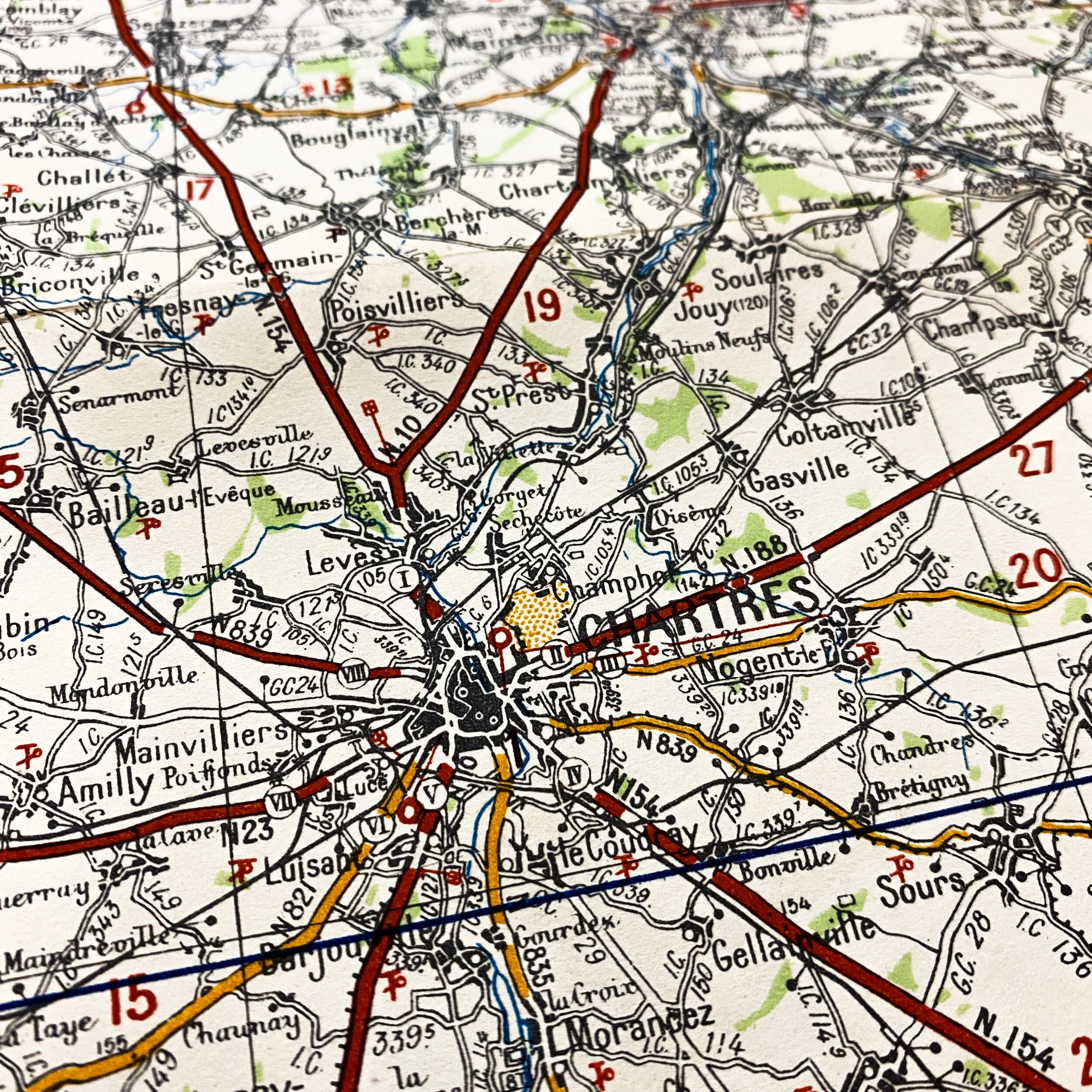1940 Dated German Frankreich (France) Map -Blatt 14 'Le Mans Paris' Combat Sector


















1940 Dated German Frankreich (France) Map -Blatt 14 'Le Mans Paris' Combat Sector
Size: 45.5 x 28 inches
This early war German infantry combat map is titled “Nordwestfranhreich” (Northwest France) and is grid sector ‘Blatt 14’ and shows the area of the Normandy region stretching all the way through most of central France to Paris. Using conjunctions with sector Blatt 11, Blatt 11 map shows the beachhead landing sites of the Allies stretching from Cherbourg to Utah, Omaha, Sword beach etc. This map Blatt 14 would have been used by retreating German troops of the sector, as well as other German infantry troops located on this to oppose the Allies advance from the beachhead and hedgerows . The map shows important and major battle sites of WII and shows towns such as: Flers, Argentan, Bagnoles, Evron, Le Mans, Chartres Paris, and many more. Located near towards the bottom left of the map shows a detailed grid sector of each map as well as the important French cities and locations and major road routes in red. This map was a bring back of a United States infantry veteran who served during the early stages of WWII. This map makes a great collection for any WWII collector.
In August 1944 the Anglo-American led army gathered in Normandy finally broke the German 7th Army's back. U.S. General George S. Patton has garnered the lion's share of praise for the Allied breakout from Normandy. The reality however is that his path to success was paved by events going even beyond the excellent work done by Bradley and Collins during July in planning and executing Operation Cobra. In particular, two individuals helped guarantee the U.S. Third Army would not face nearly the resistance in August that its brothers in arms had fought against in June and July. These two men, Adolf Hitler and British Field Marshal Bernard L. Montgomery, would do more to aid Patton's efforts than is often recognized.
For his part, Hitler, witnessing the success of Operation Cobra, had ordered an attack into the seemingly long and exposed American flank that had opened up near Mortain as Patton drove his army through the gap blown in German lines by Bradley's men. Hitler, detached and isolated from the front and more out of touch with reality than ever, gave this order despite the reality failure likely meant the end of the Seventh Army; in large part because a dozen highly mobile American divisions already had poured through the breach in the German lines. Lacking an understanding regarding the situation on the ground one could argue Hitler's attack was the correct move; as it would completely cut off the American 12th Army Group's best divisions and potentially reverse the entire situation in Normandy. The German army in Normandy however was not the German Army of 1940 and hardly was capable of successfully carrying out such an operation. Moreover, with the skies filled with Allied fighter-bombers, a massive allied superiority in mechanized formations, and allied knowledge regarding the German counterattack from ULTRA; the Germans did not stand a chance.
Thus, the doomed German counterattack began on August 6th. Three weak and run down panzer divisions led the way. The 1st SS Panzer, 2nd SS Panzer, and 2nd Panzer Divisions spearheaded the assault with a combined strength at one pre-invasion panzer division, or 145 tanks and 32 assault guns combined. Despite being under strength, these panzer divisions did represent a powerful armored collection. Mark V Panthers comprised half the German tank allotment; the heavy German panzers quickly met initial success and advanced up to seven miles into the Allied flanks. Nevertheless, after this promising start, the attack bogged down against fierce resistance from the prepared Americans.
The men of the exhausted U.S. 30th Infantry Division played a pivotal role in slowing the German advance. Most notably, the 2nd Battalion of the 30th Infantry's 120th Regiment made an incredible stand at Hill 317; an important geographical position. Surrounded for six days by the surging German counterattack, the American infantry held out against overwhelming odds before finally relieved by their countrymen. The 2nd Battalion paid a heavy price for its intransigence; the four companies from the American battalion averaged only about 35 men per company after the battle, from an average strength at 175 men per company before the German attack began. As a whole, the U.S. 30th Infantry Division lost nearly 2,000 men during six days of heavy fighting, but it had played the vital role in denying the German counter-attack any real momentum. By August 7th, the German counterstroke had increasingly proved not only a failure but also further exacerbated the increasingly dire situation facing the German 7th Army.